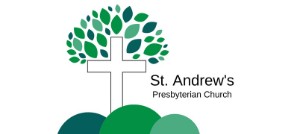Hallelujah!
EasterHallelujah!
Our first hymn has multiple versions. The tune and lyrics in our Presbyterian hymnal is close to the hymn Charles Wesley wrote in 1739. However, this is not the version I grew up singing, and perhaps that is true for you, too.
Charles Wesley is known as the greatest hymn writer of all time. He wrote over 6,500 hymns over his 80 years of life and ministry. The story of our first hymn, “Christ the Lord is risen today,” began when Charles Wesley added a fourth verse to the older hymn we will sing second, “Jesus Christ is risen today.” Needless to say, these hymns are often confused.
Wesley realized the stanzas in the older hymn, published less than three decades earlier, did not begin to cover the theological significance of the Resurrection. He rewrote this hymn with the title “Christ the Lord is risen today” or “Hymn for Easter Day.” Wesley did not want to relegate the Easter story to a mere historical event.
The hymn begins, “Christ the Lord is risen today, raise your joys and triumphs high.” This hymn does not recount the events that lead up to or follow the Resurrection of Christ. The expressive language Wesley used points to the significance of Christ’s death and Resurrection for all humanity. “Soar we now where Christ hath led, following our exalted head. Made like him, like him we rise, Ours the cross, the grave, the skies.”
The amazing thing about Peter’s Pentecost sermon that we read from Acts, is that while death invades all our stories and lives,Peter ends his sermon explaining that God’s work was done. We are still the witnesses who get to keep telling the story, “Christ the Lord is ris’n today, all creation joins to say; Raise your joy and triumph high, sing heaven and earth, reply!”
Today we return to the scene of the Easter Story and ask ourselves, “Is this more than an ancient story to you? Has Jesus become more than the name of someone who lived 2000 years ago?” Like those who have seen and heard, they left with their lives changed forever. And so might that become our Easter story as well. Let us sing again those words of faith and resurrection.
Hymn for Easter Day and every day after
“Jesus Christ is Risen Today” was first written in Latin and the English translation, along with the tune, first appeared in a collection of Psalms and Hymns published in 1708. The popularity of the hymn is due to the tune, “Easter Hymn” was specifically composed for the lyrics in “Jesus Christ is Risen Today.” This tune is regarded as one of the more joyful Easter tunes.
While our hymnal lists the author as “anonymous,” researchers have made a connection between the Collection of Hymns and the diaries of a poet and Rector at St Augustine’s in Oxford, Richard Roach. Evidence seems to establish that Roach was the musician and editor of the hymns including our next hymn.
The scripture we read from Matthew is another version of the events of Easter morning with similarities and differences with the two stories from Mark and John we read last week. The Easter hymn brings together two themes of Holy Week and Easter, the Cross and the Resurrection. Christ crucified and risen. One of the striking features of this hymn is its lively tune with the repetition of “Halle-Halleluiah.”
The first line of the fourth verse proclaims, “Sing we to our God above, hallelujah!” This language is the opposite of the fear and hesitation that figures prominently in the Easter narrative. In worship, everything we do and say constitutes a liturgy of our faith. Our service is a statement of what we believe, whom we worship, and gives language to our hopes and prayers.
“Jesus Christ is risen today” is often associated with Charles Wesley since he adapted it in 1739 into a new hymn titled, “Christ the Lord is risen today.” Wesley wanted to give the liturgy back to the people and the alleluia in the ancient hymn he discovered provided him that opportunity. Charles Wesley added the 4th verse to this ancient Easter hymn, “Jesus Christ is Risen Today” and that is the version of the hymn we sing now.
The Dance of Life
Perhaps one of my greatest regrets is never learning how to dance. I can claim to be too clumsy, or too embarrassed to embarrass myself. I did brave a 5-minute father of the bride dance at our daughter’s wedding.
We turn to a more contemporary Easter hymn “Lord of the Dance” written by English poet and folk musician Sydney Carter in 1967. He was educated at Oxford and taught high school in the 1940’s. Carter began composing folk songs in the 1950’s and 1960’s. “Lord of the Dance” captured the spirit of the 1960’s protest movement and brought this sound and spirit into the church, especially in services designed to reach young people. Carter wrote the lyrics first and then adapted the words to a melody from the Shaker tune “Simple Gifts.”
Carter called the song a “carol.” An earlier medieval carol also explored the allegory of the dance as a metaphor for humanity’s relationship with Christ. Carter wrote, “I see Christ as the incarnation of the piper who is calling us. The dance of God is at the heart of our reality. I sing of the dancing pattern in the life and words of Jesus.”
The first stanza tells of the dance of creation all the way to the incarnation. The second stanza mentions that the scribes and Pharisees would not join in with the dance, but the fisherman,James and John, did dance with the Dancer. The third stanza has been viewed by some as anti-Semitic, “the holy people said it was a shame,” leading to Christ’s crucifixion. The fourth stanza has one of those turns of phrases that are typical of many folk-based songs, “it’s hard to dance with the devil on your back,” offering a different perspective on this central narrative in Christian experience. The final stanza captures the joy of the Resurrection when the dance is complete and all are invited. “I’ll live in you if you live in me.”
The Romans passage sets a distinction between life in the spirit and life in the flesh. This means the dancing pattern is to not live life in a self-centered way. To be “in Christ” is to be swept up in the power of the Spirit and be free from what has bound us, limited us, tied us. It is not the result of something we do, it is something God does for us. It is to reorient one’s life by a power greater than oneself.
I know very little about dance but it seems that dance is not about a technique, it is about allowing your mind and body and heart to be free. It is living life in the Spirit that welcomes God’s work in us and to be in step with God’s work. Our final song is #250 “I Danced in the Morning.”

